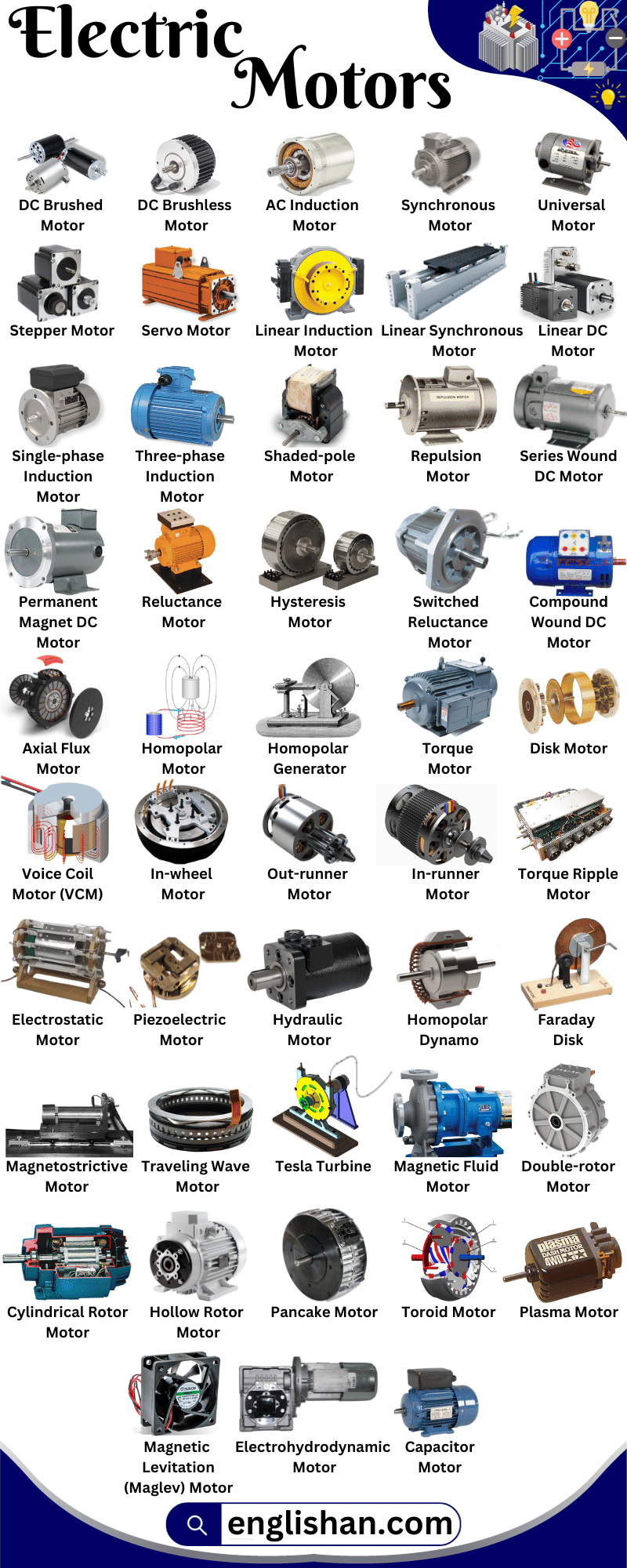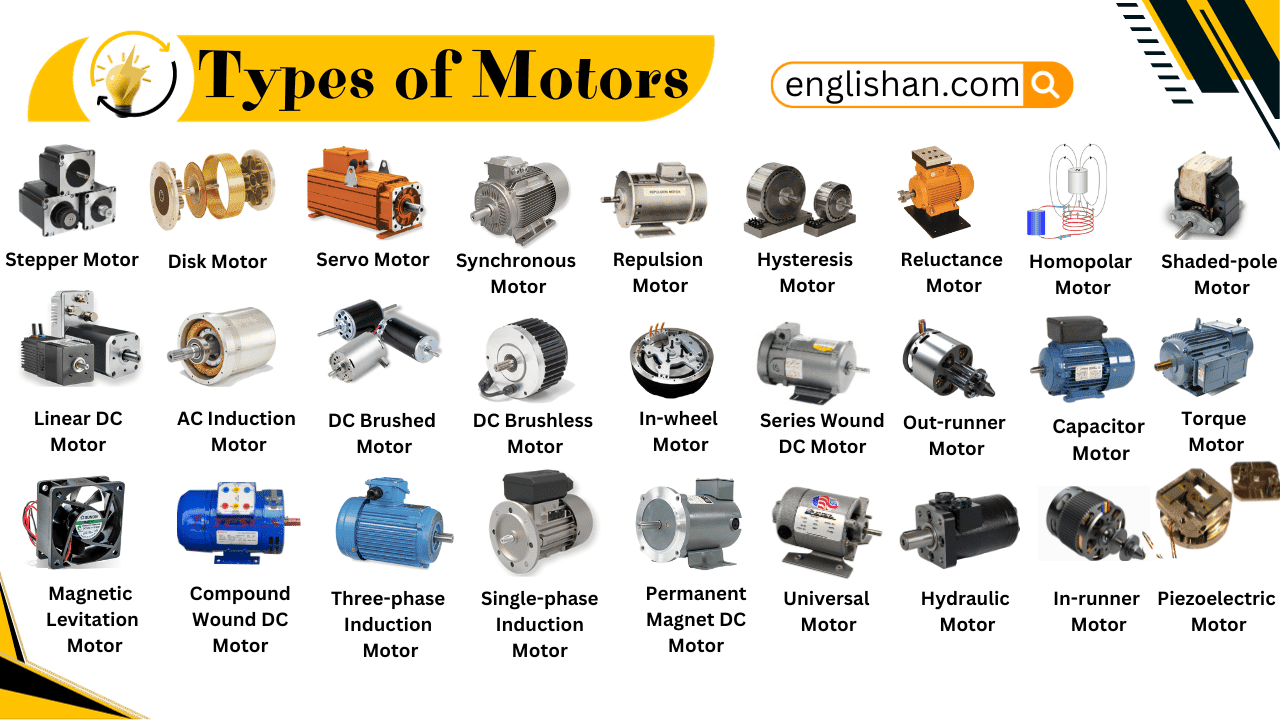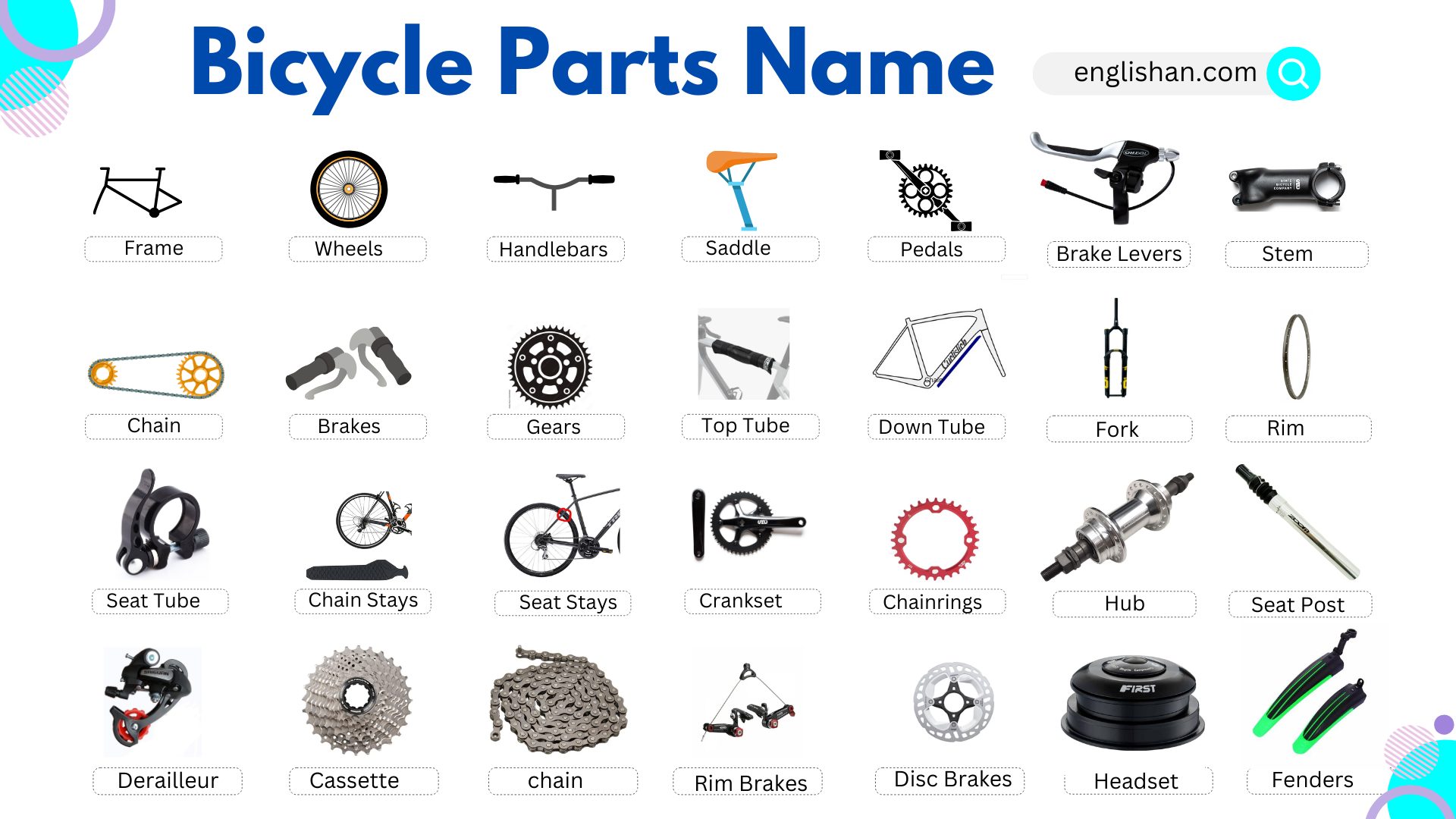Contents
Electric motors are devices that convert electrical energy into mechanical energy. They are used in a wide variety of applications, from powering household appliances to driving industrial machinery. There are many different types of electric motors, each with its own advantages and disadvantages.
The two main types of electric motors are AC motors and DC motors. AC motors are powered by alternating current, while DC motors are powered by direct current. AC motors are more common than DC motors, and they are available in a wider range of sizes and power ratings.
Special purpose motors are a category of electric motors that are designed for specific applications. Some examples of special purpose motors include stepper motors, servo motors, and linear motors.
Types of motors: Ac motors
Ac motors can be classified into two categories:
Synchronous motors
Synchronous motors rotate at the same speed as the frequency of the AC power supply. This is because the rotor (the part of the motor that spins) is locked in step with the rotating magnetic field in the stator (the stationary part of the motor). Synchronous motors are used in applications where precise speed control is required, such as in industrial robots and medical equipment.
Types of synchronous motors are:
- Reluctance motors
- Hysteresis motors
Induction motors(asynchronous motors)
Induction motors rotate slightly slower than the frequency of the AC power supply. This is because the rotor is not locked in step with the rotating magnetic field in the stator. Induction motors are the most common type of AC motor, and they are used in a wide variety of applications, from powering household appliances to driving industrial machinery.
Types of Induction motors are:
- Single phase
- Three phase
Types of motors: Dc motors
Dc motors can be classified into three categories:
Brushed DC motors:
Brushed dc motors are the simplest and most common type of DC motor. They have a commutator and brushes that are used to switch the current to the rotor. Brushed DC motors are relatively inexpensive and easy to control, but they require more maintenance than brushless DC motors.
Types of brushed dc motors:
- Permanent magnet brush
- shunt-wound
- series-wound
- compound-wound
Brushless DC motors:
Brushless dc motors do not have a commutator or brushes. Instead, they use electronic sensors to determine the position of the rotor and switch the current accordingly. Brushless DC motors are more efficient and reliable than brushed DC motors, but they are also more expensive.
Types of brushless dc motors are:
- In-runner brushless
- Out-runner brushless
Types of motors: Special purpose motors
Types of special purpose motors are:
- Servo motor
- Stepper motor
- Linear motor
- Pancake motor
- Direct drive motor
20 Types of motors
Here are 20 types of motors:
| Serial Number | Motor Type |
|---|---|
| 01 | Electric Motor |
| 02 | Induction Motor |
| 03 | DC Motor |
| 04 | Stepper Motor |
| 05 | Synchronous Motor |
| 06 | Brushless Motor |
| 07 | AC Motor |
| 08 | Gear Motor |
| 09 | Servo Motor |
| 10 | Linear Motor |
| 11 | Universal Motor |
| 12 | Hydraulic Motor |
| 13 | Pneumatic Motor |
| 14 | Permanent Magnet Motor |
| 15 | Reluctance Motor |
| 16 | Single-Phase Motor |
| 17 | Three-Phase Motor |
| 18 | Shaded Pole Motor |
| 19 | Double Cage Rotor Motor |
| 20 | Homopolar Motor |

Common Types of motors:
- Electric Motors: Use electricity to make things move. Common in appliances and machines.
- DC Motors: Run on batteries, found in toys and small electronics.
- AC Motors: Use electricity from outlets, found in household appliances and industrial machines.
- Induction Motors: Common in homes and factories, easy to use and durable.
- Synchronous Motors: Keep a constant speed, used in clocks and timers.
- Stepper Motors: Move in steps, precise control, used in 3D printers and robots.
- Servo Motors: Controlled by pulses, used in remote-controlled devices and robotics.
- Brushless Motors: Efficient, long-lasting, used in fans and computer hard drives.
- Universal Motors: Run on both AC and DC, versatile, found in power tools and vacuum cleaners.
- Linear Motors: Create straight-line motion, used in trains and conveyor belts.
- Hydraulic Motors: Use fluid pressure to move, found in heavy machinery and vehicles.
- Pneumatic Motors: Use compressed air for motion, common in industrial applications.
- Hysteresis Motors: Smooth and quiet, used in clocks and small appliances.
- Reluctance Motors: Energy-efficient, used in washing machines.
- Switched Reluctance Motors: Variable speed, used in electric vehicles.
- Traction Motors: Propel vehicles, found in trains and electric cars.
- Piezoelectric Motors: Very small, precise motion, used in electronics and medical devices.
- Voice Coil Motors (VCM): Linear motion, used in camera lenses for focusing.
- Eddy Current Brakes: Create resistance to slow down objects, used in trains and roller coasters.
- Jet Engines: Propel aircraft, work by pushing air backward to move forward.
You May Also Like
FAQs:
The four main types of motors are:
1. DC Motor (Direct Current Motor)
2. AC Motor (Alternating Current Motor)
3. Stepper Motor
4. Servo Motor
Types of AC Motors:
1. Synchronous Motor – Runs at a constant speed.
2. Induction Motor – Common type, runs slightly slower than the power supply.
Types of DC Motors:
1. Brushed DC Motor – Uses brushes for current supply.
2. Brushless DC Motor – More efficient, no brushes.
3. Series DC Motor – High starting torque.
4. Shunt DC Motor – Maintains constant speed.
Each motor type is used for different needs like speed control and efficiency.
The three main types of AC motors are:
1. Synchronous Motor – Runs at a constant speed.
2. Induction Motor – Most common, runs slightly slower than the power supply.
3. Universal Motor – Can run on both AC and DC power, used in small appliances.
Each type is used for different tasks based on speed and power needs.
The three basic types of motors are:
1. AC Motor – Runs on alternating current (AC) power.
2. DC Motor – Runs on direct current (DC) power.
3. Universal Motor – Can run on both AC and DC power.
These motors are used in different applications based on the power source and requirements.
A synchronous motor is an AC motor. It runs on alternating current (AC) and operates at a constant speed that is synchronized with the frequency of the power supply.
You May Also Like






